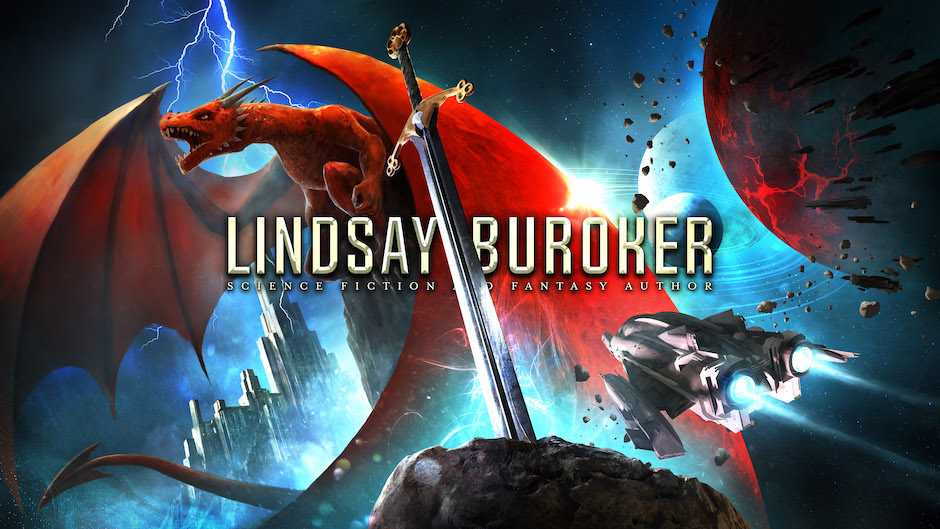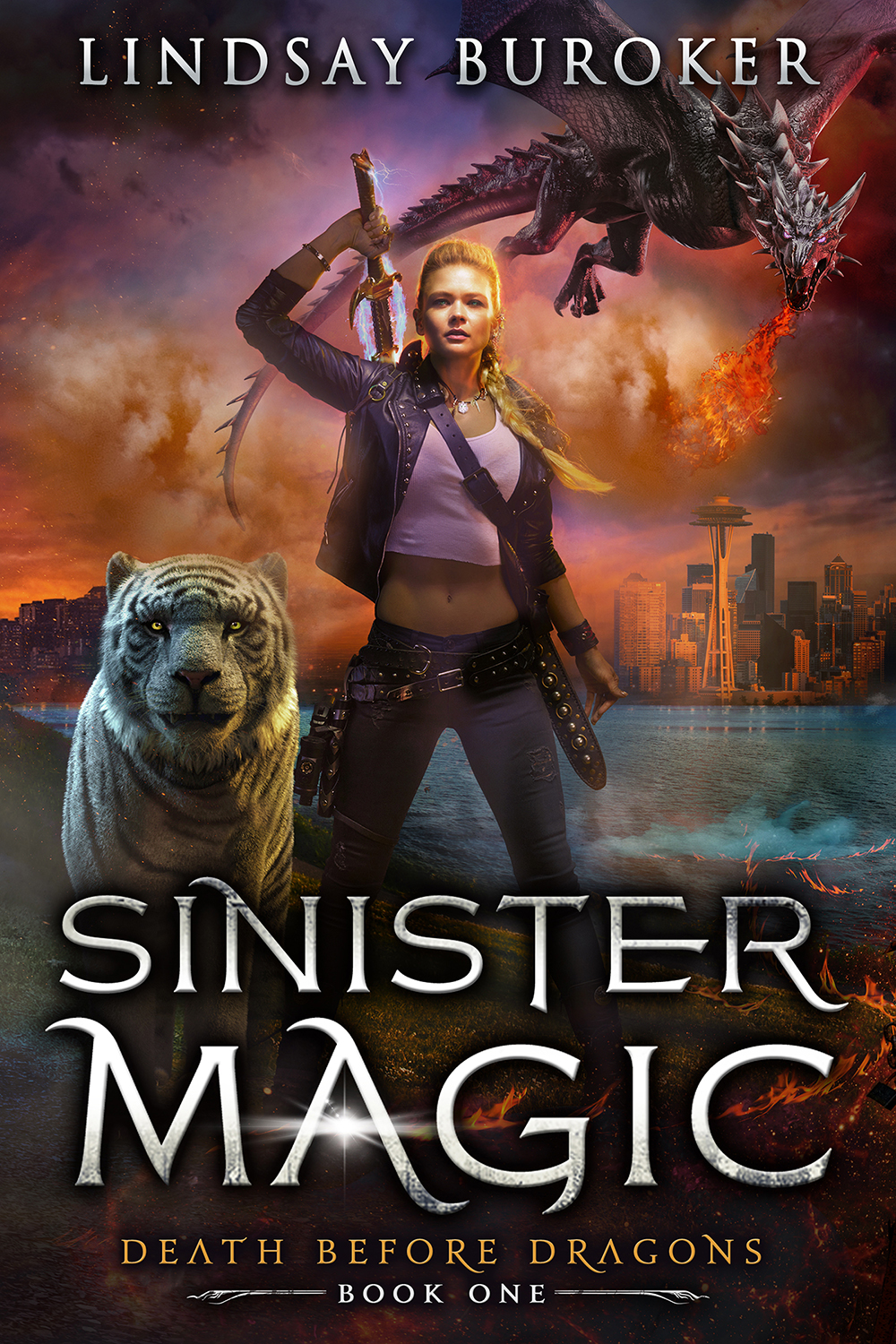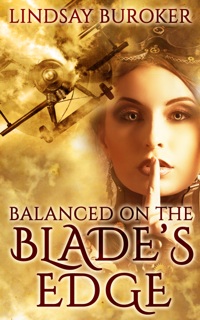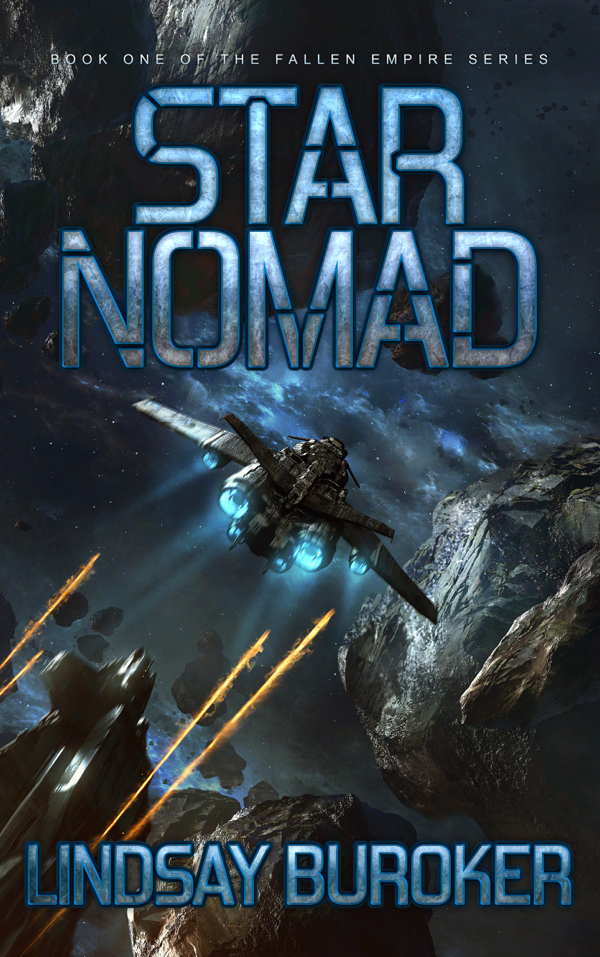Between the new wave of self-published authors and the traditional authors who are e-publishing their backlists, we have a whole slew of folks selling ebooks on their own now. More than ever, you have to think like a business person if you want to compete and have a chance at earning a living.
Since most of our promotion is done online, it makes sense to look to the guys who make millions that way, the internet marketer extraordinaires who create and sell information products. You’ve probably crossed some of them, as they’re everywhere, pushing everything from real estate investing advice to diet tips. Whether you’re into their schticks or not, it can be useful to watch what they’re doing, because they’re masters at marketing online.
As authors, we’re essentially trying to do the same thing as they are, even if we’re selling $5 science-fiction ebooks instead of $399 how-to-beat-the-stock-market-and-make-millions courses.
Three tactics these e-entrepreneurs use are the free gift, the mailing list, and the product launch. Let’s take a closer look at each (and talk about how authors can employ them):
The Free Gift and the “Sales Funnel”
Some authors, indie and traditionally published, loathe the idea of giving away work for free. Writing is a job, and you’re supposed to get paid, dagnabit!
But, by giving away something for free, you can often make more overall than if you insist on charging for everything, and, with digital products, freebies are quite viable. Once you cover the initial expenses (i.e. editing and cover art), it costs nothing to have that ebook out there, being downloaded over and over.
The “free gift” is a tried-and-true technique too. (By the way, I recommend Robert B. Cialdini’s Influence if you haven’t read it — a great introduction to human nature and marketing).
Successful internet marketers use free ebooks, courses, videos, etc. to get people to sign up for their mailing lists. You have to sign up for the list or “newsletter” to get the freebie. Once they’ve got you on the list, the marketer can send future messages (AKA sales pitches) straight to your inbox. They’ll often hook you with that first product, draw you into their world, and then sell you more expensive products (this is the “sales funnel”).
Now, I don’t particularly like the idea of forcing someone to sign up for my mailing list — fiction is a different beast than non-fiction or “info-products” as people really need to try it before they decide if they’re fans or not. But here’s how I use my freebie:
- Give away the first ebook in a series — Here’s where the “sales funnel” comes in. You start with a free book, then charge for subsequent books in the series. If there’s not an obvious next book for the reader to go on to purchase, this technique tends to be far less effective.
- Mention my website, social media links, and newsletter at the end of the book — as I said, I won’t trick anyone into signing up for my list, but I’m going to make sure people know about it! By the by, there are all sorts of studies out there showing that using a “call to action” (such as asking people to come to your site and sign up for your newsletter) is more effective than simply informing people that something exists.
The Mailing List
We’ve touched on this already, and I’ve written several posts on the why and how of starting a mailing list before (links below), so I’ll keep this short, but you won’t find a successful internet entrepreneur without a list. They say, “The money is in the list,” and for those guys it’s very true.
As an author, you’ll get a lot of your sales from people who simply see your books at Amazon, B&N, and the like (especially once you’ve gotten over the hump of the first thousand or so that you have to hand sell), but a newsletter is still a must. This is a way to keep in touch with your fans and let them know when you have a new book out.
For indie authors, in particular, you can’t count on bookstores or publishers to do any marketing of your new titles; it’s up to you to let fans know when they can go purchase the next one.
You can’t assume people will be so enamored of your work that they’ll remember to check Amazon every few months to see if you have something new out. It’s more likely that they’ll forget about you! This is especially true if you’ve only written a couple of books, and your characters haven’t taken up long-term residence in their minds yet. But, if you can get readers to sign up for your mailing list, it only takes a quick note once in a while to remind them of your existence (and your latest books).
- Newsletters 101: Email Marketing for Authors
- How to Start a Newsletter (and why every author should)
The Product Launch
Publishers know all about launching a product. Weeks before the book comes out, they’re sending out ARCs to review sites and trying to build excitement. They want to make sure readers are aware of the up coming release, and ideally they’ll pre-sell loads of the books before they’re even available (you’ve no doubt seen that, on Amazon and other sites, you can buy books a month or two before they’re released).
For independent authors, it can be tough to do things in the same manner. For one thing, Amazon isn’t going to pre-list our books. Book #7 in your paranormal vampire romance series won’t appear on their site until you’ve e-published it through the KDP (or POD-published it through CreateSpace, Lightning Source, etc.). So that means no pre-sales for us.
Sending out review copies before publishing is a possibility if you have the patience to hold back on releasing your book once you have it back from your editor and ready to go. But, it’s still a struggle to find popular review sites that accept self-published titles.
So, how can indie authors do a product launch?
You can probably think of lots of ideas, but here are a few things I do (keep in mind, I’m not the sales-woman type and hate to really push my stuff, so I’m definitely on the light end of things when it comes to marketing — you can do more if you’re comfortable doing so):
- Talk about the book on Facebook, Twitter, etc. in the last month or two before it’s ready to publish. Lots of my readers follow me on those sites, so it’s fun to give them little tidbits (I’m editing then, anyway, so it’s easy to throw a snippet of dialogue out there). As I write this post, I’m about two weeks from releasing my fourth Emperor’s Edge book, and you can check out my Facebook Author Page to see what I’ve been up to.
- Let my newsletter subscribers know in advance when the book is coming out. Last month, I wrote to my subscribers, letting them know about the release of the second EE audiobook, and I also mentioned that Book 4 would be out soon. I don’t like to bug people more than once a month (though I’ve known authors who work the list and really market hard in the weeks leading to a new release), but that was a little advanced warning, and then I’ll write again when the book is out.
- Post updates, excerpts, cover art, etc. on my blog. Yesterday, I posted the cover art for the new book and a 3,000-word excerpt from early in the adventure. About a week before that, I posted an update and FAQ on the book. When it’s time to launch, I’ll post the news with all the purchase links and the first chapter or two of the novel.
I admit part of this is just to keep folks updated on my progress (with a series, you’ll find that lots of people do write to ask when the next one is coming out!), but I definitely have that “product launch” concept in mind, too, and I also hope my efforts are building anticipation so that readers will want to grab the book right away when it comes out.
There we go, the free gift/sales funnel, the mailing list, and the product launch covered! If you authors out there are using any of these marketing tactics, let us know how it’s going. If you’re not… well, you’ve got homework, right?




Great post. I was just thinking about this today after visiting a site that was marketing a very expensive PDF tutorial!
I’m planning a free story for newsletter subscribers when I publish the sequel to Storm Dragon. A story that takes place between the two books but isn’t essential to the series. If it’s not forbidden in the KDP terms, I’m going to mention it in the start of the book.
I think they let you pimp your own site and books, so long as you don’t mention B&N or other nasty competitors, heh.
Thanks for the reminder, Lindsay! I need to start a newsletter. The shy writer part of me doesn’t want to do it, but the saleswoman part knows I must.
It’s not so bad if you just pretend you’re sending a note to friends instead of trying to sell things to strangers. At least when you’re an author, you know they signed up because they enjoy your work!
I never really thought about the value of promoting something a month in advance, but it’s true. Because you let us know when Book #4 is coming out, here I am settling in to reread Book #3 at my leisure as a refresher, which is getting me doubly excited for Book #4’s arrival….
It’s just too bad that Amazon and the other guys don’t let us (indies) make sales pages for our books so people can pre-order (or at least add a book to a wishlish and post reviews of ARCs) ahead of time.
Of course, as a I reader, I get miffed when I stumble across an interesting looking book only to find out that it won’t be out for three months. 😛
I’m about to launch my first series. Following your fine example, the first is free. The second will roll. I ask folks to sign up for my newsletter at the end. Those on the list were notified of the book going up on Smashwords first. Official launch isn’t until May 7th, but they can download now.
I’m doing bigger launches for the first in this series and the first in the second series this fall with a blog party and blog tour. We’ll see how it goes. Keeping my fingers crossed.
You seem to be doing all the right things over there, Mary. I hope they translate to lots of sales for you!
I think they are good ideas. Thanks Lindsay. The free e-book I think especially works well with books in a series. I have gotten into quite a few series that I don’t think I would have started if it weren’t for the first free book. This was how I started with EE too. Then I happily bought the second and third in the series ….
Ah, so the master plan worked! 😀
As always, you give excellent tips.
I’m going to have to put some of these into play.
I think you are totally on the money here. I’ve read a few blogs lately about how authors can’t use more ‘guru’ internet marketing techniques, and I don’t think that is necessarily true. As with everything, it the execution that matters.
I think the hardest part for some writers is really thinking of themselves and their writing as a business.
Great post!
Another great post, Lindsay. I agree, these three approaches can work for indie writers–the “call to action” by itself is a great tip and one I will be using (softly, of course 😉
I actually started with your Flash Gold series, but now have EE on my digital to-read pile and agree that free can work. In fact, for myself as a reader, I think ironically that free works better than the 99 cent price point for novels. I’m fine with paying $5 for an indie novel, provided it’s well done and entertaining–making the first one free gets me hooked and makes that something for nothing offer connect with me. I really need to read Cialdini’s book–thanks for the recommendation.
One thing I’m working on is releasing a trio of prequel short stories featuring the main character from my upcoming serial novel–once I’ve released the first episode. Tie-ins, especially free ones, might be another way to connect people to a series, as well as being incentive to sign up for a mailing list.
Thanks again for another great post.
Pingback: Blog Treasures 4~21 | Gene Lempp's Blog
Lindsay – I absolutely LOVE your writing blog. This one is up there with Copyblogger and Problogger – in fact, I enjoy it more! It is really focused on exactly what I’m doing as a self-published author. Thanks for the info and insight. So helpful.
Pingback: Link Feast For Writers Vol. 11 | Reetta Raitanen's Blog